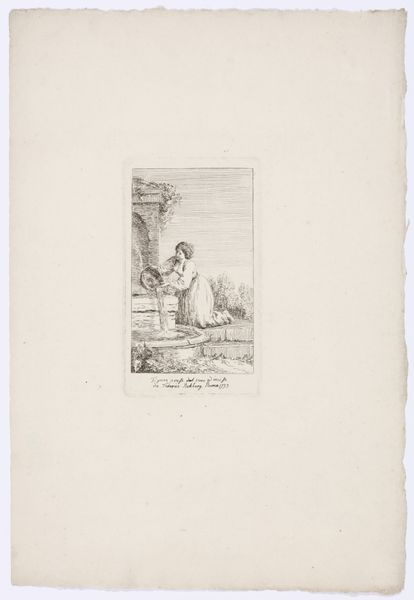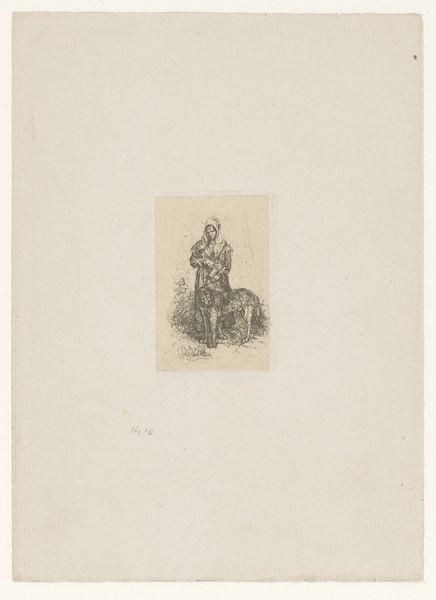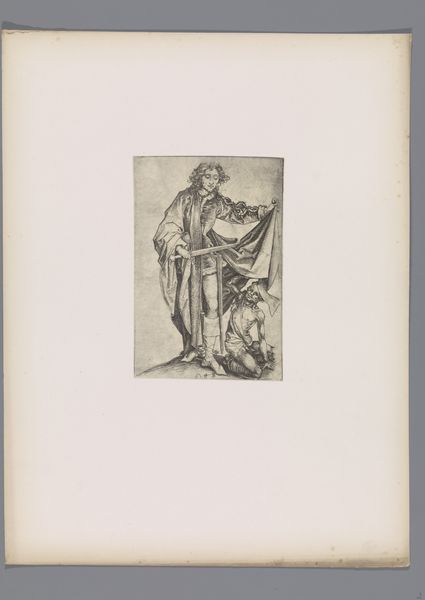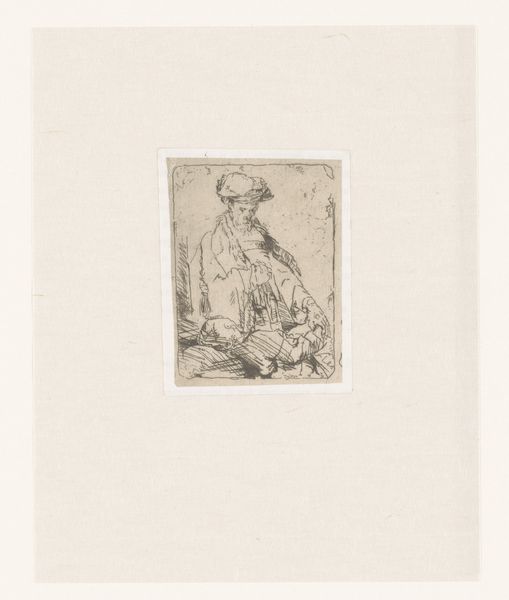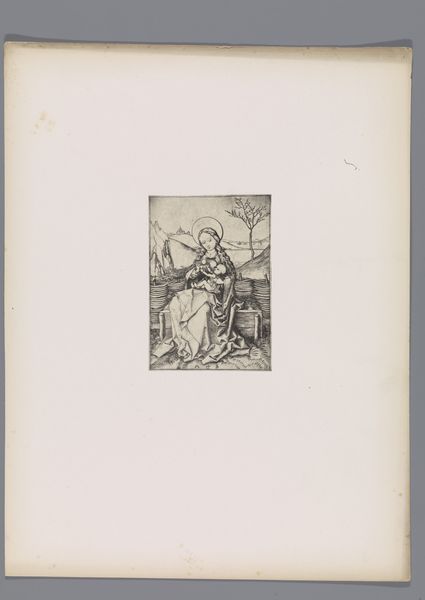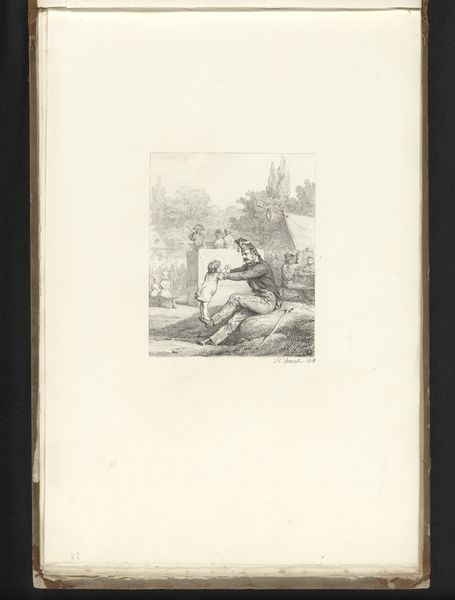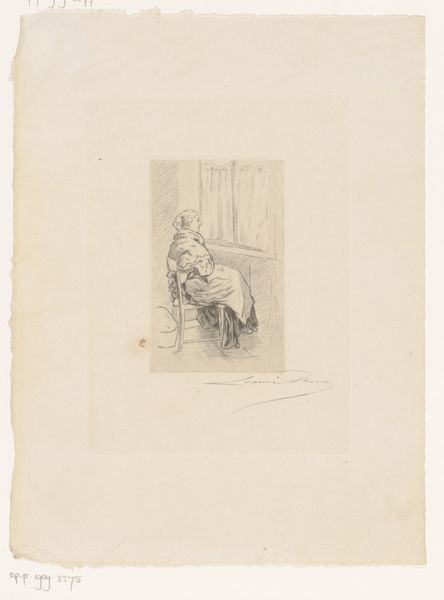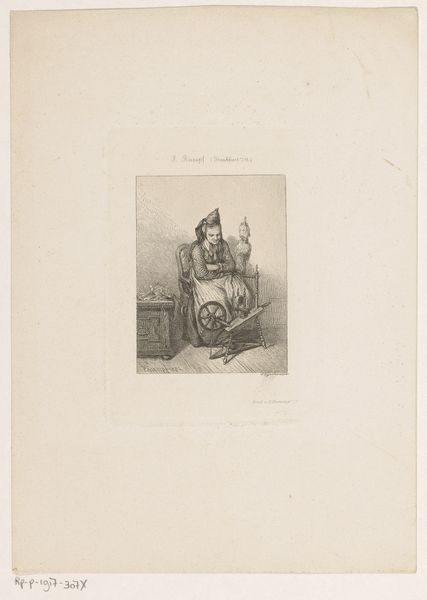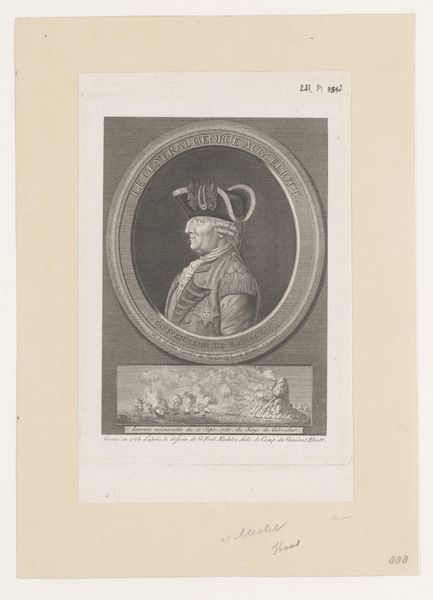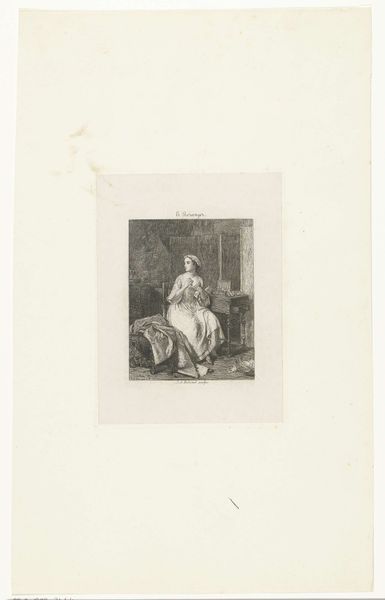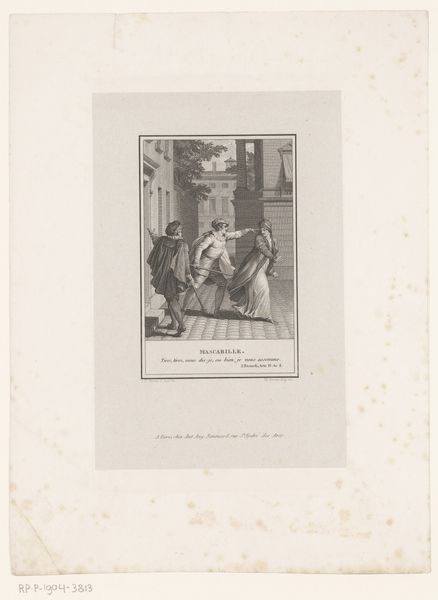
print, etching
#
aged paper
#
toned paper
#
narrative-art
#
baroque
# print
#
etching
#
old engraving style
#
figuration
#
genre-painting
#
realism
Dimensions: height 123 mm, width 78 mm
Copyright: Rijks Museum: Open Domain
Frederick Bloemaert made this print of a seated beggar with his leg in a sling, and a plate for collecting alms, sometime in the 17th century. It's made using etching, a printmaking technique that relies on the corrosive action of acid to create lines in a metal plate. Here, Bloemaert has used the etching needle to create a network of fine, closely-spaced lines. Look at the way he has built up the shadows, and the texture of the beggar’s worn clothing and the rough ground on which he sits. The etched line is very different in character from a drawn line; it has a characteristic bite and a slight three-dimensionality, due to the way the acid eats into the metal. Of course, the choice of etching as a medium is itself significant. Printmaking allowed images to be reproduced and disseminated widely. In this case, the print raises awareness about poverty and social inequality, making it accessible to a broad audience. So, in understanding this artwork, we should consider not just the image itself, but the means by which it was produced and distributed.
Comments
No comments
Be the first to comment and join the conversation on the ultimate creative platform.
